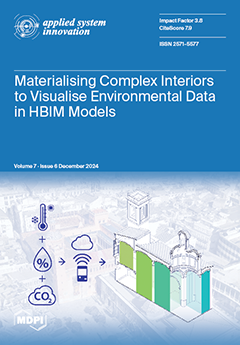Open AccessArticle
Case Study of an Integrated Design and Technical Concept for a Scalable Hyperloop System
by
Domenik Radeck, Florian Janke, Federico Gatta, João Nicolau, Gabriele Semino, Tim Hofmann, Nils König, Oliver Kleikemper, Felix He-Mao Hsu, Sebastian Rink, Felix Achenbach and Agnes Jocher
Cited by 2 | Viewed by 4903
Abstract
This paper presents the design process and resulting technical concept for an integrated hyperloop system, aimed at realizing efficient high-speed ground transportation. This study integrates various functions into a coherent and technically feasible solution, with key design decisions that optimize performance and cost-efficiency.
[...] Read more.
This paper presents the design process and resulting technical concept for an integrated hyperloop system, aimed at realizing efficient high-speed ground transportation. This study integrates various functions into a coherent and technically feasible solution, with key design decisions that optimize performance and cost-efficiency. An iterative design process with domain-specific experts, regular reviews, and a dataset with a single source of truth were employed to ensure continuous and collective progress. The proposed hyperloop system features a maximum speed of 600
and a capacity of 21 passengers per pod (vehicle). It employs air docks for efficient boarding, electromagnetic suspension (EMS) combined with electrodynamic suspension (EDS) for high-speed lane switching, and short stator motor technology for propulsion. Cooling is managed through water evaporation at an operating pressure of 10
, while a 300
inductive power supply (IPS) provides onboard power. The design includes a safety system that avoids emergency exits along the track and utilizes separated safety-critical and high-bandwidth communication. With prefabricated concrete parts used for the tube, construction costs can be reduced and scalability improved. A dimensioned cross-sectional drawing, as well as a preliminary pod mass budget and station layout, are provided, highlighting critical technical systems and their interactions. Calculations of energy consumption per passenger kilometer, accounting for all functions, demonstrate a distinct advantage over existing modes of transportation, achieving greater efficiency even at high speeds and with smaller vehicle sizes. This work demonstrates the potential of a well-integrated hyperloop system to significantly enhance transportation efficiency and sustainability, positioning it as a promising extension to existing modes of travel. The findings offer a solid framework for future hyperloop development, encouraging further research, standardization efforts, and public dissemination for continued advancements.
Full article
►▼
Show Figures





